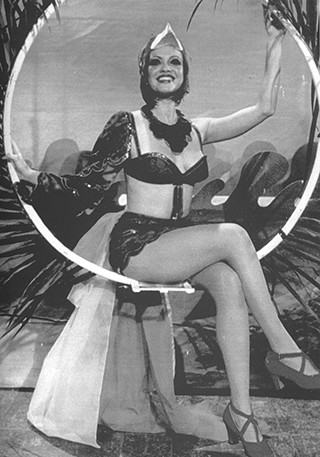Childhood Influences - Part 1 (Vedettes)
Vedette
Cuban summers are unbearably hot, add the intermittent power outages blocking fans from swinging their blades, and people are forced to stake out for breezes the rest of the evening. It was common for neighbors to join my parents on our front porch with their cigarettes and guitars to kill time musically – an iconic post-revolutionary night in Havana. When I was too tired to wait for the electricity to make its reappearance, my mother would spread me across her lap on the old rocking chair that cluttered the porch, flattened a thin bedsheet over my skin to discourage mosquitos from biting, and sang tunes from my all-time favorite musical film, "La Bella del Alhambra", which follows the rise to stardom of Rachel, a chorus girl who perseveres in achieving her dream to become the most loved vedette at the Alhambra Theatre in 1920s Havana. I can say with certainty that it was this film that carved my soul with the desire to become a performing artist and it was only natural I incorporated elements of it in my creation.
It is easy to draw parallels between "La Bella del Alhambra" (The Beautiful Girl of Alhambra) and Lady Alhambra: both titles allude to the majesty associated with the Alhambra Palace of Andalusia, Spain; both take place at the turn of the century; and in both stories the protagonist is a vedette . One significant difference in referencing the Alhambra in the film and the play is that in the film, Alhambra is the name of a physical space – the Alhambra Theatre – while in the play it is the protagonist’s stage name, characterizing her as a larger than life performer. Vedettes were women performers celebrated and admired for their stage presence and versatile talents. In Cuba, a vedette is admired and highly esteemed for her versatility and charismatic beauty made an icon of Cuban entertainment, as in the case of household names like Rita Montaner, Amalia Aguilar, María de los Ángeles along with others. The first time I watched the film, "La Bella del Alhambra", I felt a deep desire to be a woman performer who could sing, dance, and act, just like a vedette. I was too young to grasp the film’s commentary on the early days of capitalism, poverty, female objectification, sexuality, and corruption of a 1920s and 1930s Cuba, but I could understand the happiness and power felt by a passionate actress who got to sing and dance, perform sketches, and interact with an audience that loved her. I wanted to be her! While performing Lady, I rediscovered footprints of my childhood that laid dormant in my spine and quickly came to life through performance.




Comments
Post a Comment